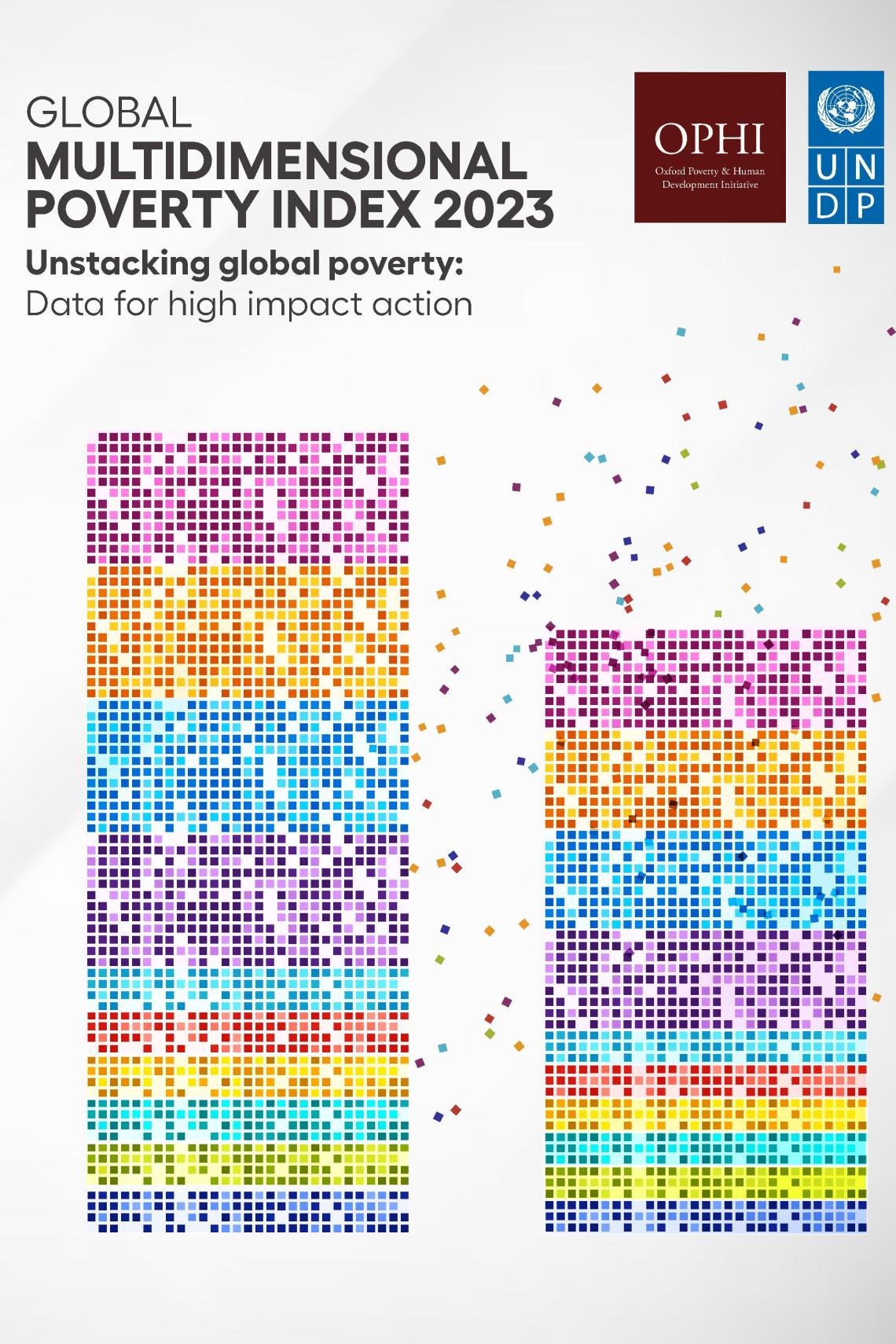25 countries halved multidimensional poverty in 15 years, but 1.1 billion remain poor
Nearly one in three ‘poor’ countries surveyed halved their global poverty rating within 15 years, according to the latest report of the global Multidimensional Poverty Index (MPI), released today by the United Nations Development Programme (UNDP) and the Oxford Poverty and Human Development Initiative (OPHI) at ODID.
However, according to the 2023 release, 1.1 billion out of 6.1 billion people internationally (just over 18%) live in acute multidimensional poverty across 110 countries. Sub-Saharan Africa accounts for around half of these (534 million), while South Asia accounts for some (389 million). Together, these regions are home to around five out of every six poor people.
Nevertheless, some countries recorded remarkable reductions in poverty. India saw 415 million people exiting poverty within just 15 years from 2005 to 2021. And, in just four years from 2010, more people exited poverty in China (69 million) than live in the UK. While Indonesia saw an eight million reduction in the number of MPI poor in the five years to 2017.
Countries halved their MPI in periods as short as four to 12 years, demonstrating the feasibility of the Sustainable Development Goal (SDG) target of halving poverty (according to national definitions) within 15 years.
The report on 110 countries’ MPI ratings, demonstrates that poverty reduction is achievable. But lack of comprehensive data over the COVID-19 pandemic poses challenges in assessing immediate prospects, according to the compilers. Despite these encouraging trends, the lack of post-pandemic data for most of the 110 countries covered by the global MPI restricts our understanding of the pandemic's effects on poverty.
Pedro Conceição, Director of the UNDP’s Human Development Report Office, observes, ‘There was steady progress in multidimensional poverty reduction before the pandemic. However, the negative impacts of the pandemic in dimensions such as education are significant and can have long-lasting consequences. It is imperative that we intensify efforts to comprehend the dimensions most negatively affected, necessitating strengthened data collection and policy efforts to get poverty reduction back on track.’
Meanwhile, Sabina Alkire, Director of Oxford’s OPHI, says, ‘The astonishing scarcity of data on multidimensional poverty is hard to comprehend, let alone justify. The world is reeling under a data deluge and gearing up for the next era of digital growth. Yet we do not have a post-pandemic line of sight for 1 billion of the 1.1 billion poor people.
‘This problem is eminently solvable. Data on multidimensional poverty are faster to gather than most realise, requiring just 5% of questions in the surveys we use. We call on funders and data scientists to make a breakthrough on poverty data, so the interconnected deprivations that strike poor people in real time can be tracked – and intercepted.’
Context-specific multidimensional poverty indices reflect national definitions of poverty, whereas the global MPI assesses multidimensional poverty with the same methodology to provide comparable data.
Nearly two-thirds of all poor people (730 million people) live in middle-income countries, making action in these countries vital for reducing global poverty. Although low-income countries constitute only 10% of the population included in the MPI, these are where 35% of all poor people reside.
Children under 18 years old account for half of MPI-poor people (566 million). The poverty rate among children is 27.7%, while among adults it is 13.4%. Poverty predominantly affects rural areas, with 84% of all poor people living in rural areas. Rural areas are poorer than urban areas across all regions of the world.

